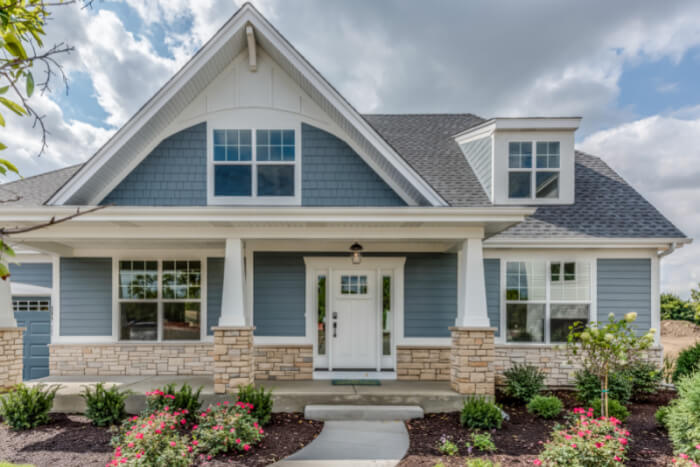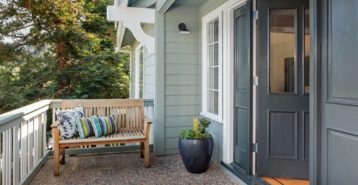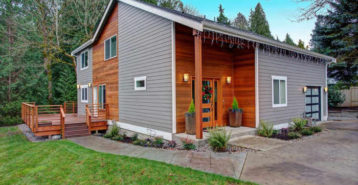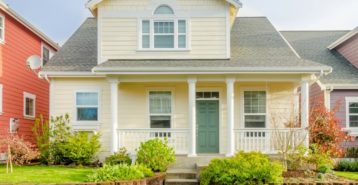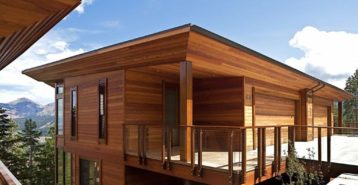What Is Steel Siding?
Steel siding is a durable, low maintenance residential siding option. It is made from steel that is coated with a layer of zinc to protect against rust and corrosion. Available in a variety of colors and styles, including panels, shingles, and vertical boards, it is aesthetically appealing on many types and styles of home. It can also be made to look like other types of siding, such as wood or stone.
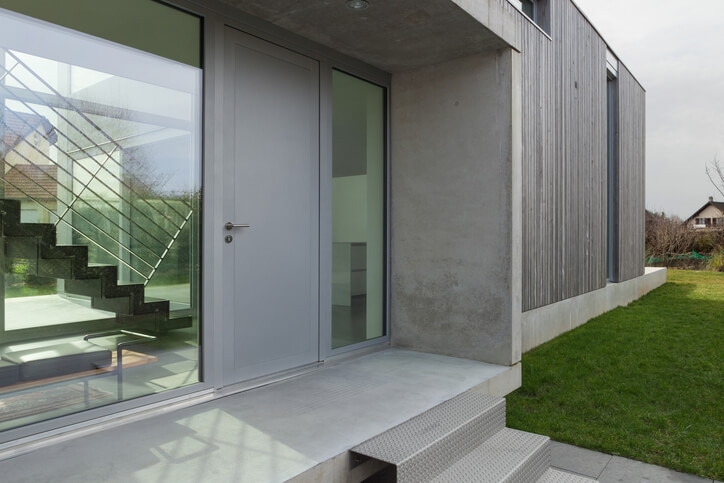
How Much Does Steel Siding Cost?
Expect to pay $7 to $16 per square foot of steel siding installed. Your exact price will depend on factors like:
- Siding style
- Home size
- Local labor rates
| Steel Siding Type | Typical Installed Cost (Per Sq. Ft.) | Best For |
|---|---|---|
| Corrugated / Ribbed Panels | $7 to $12 | Budget-minded projects, barns, modern accents, and hail-prone areas where durability matters more than ornate detail. |
| Vertical Panels (Board-and-Batten Look) | $9 to $14 | Farmhouse and contemporary styles that want clean vertical lines with low maintenance. |
| Seamless Steel (Custom-Cut Lengths) | $10 to $16 | Homeowners who want a sleek look with fewer seams — great for long walls and minimizing water intrusion. |
| Steel Shingle / Shake Profiles | $10 to $16 | Traditional homes aiming for a wood-look aesthetic with higher impact resistance and lower upkeep than real wood. |
| Insulated (Foam-Backed) Steel | $14 to $16 | Energy-conscious upgrades where added rigidity, quieter interiors, and modest thermal gains are priorities. |
| Log-Look Steel | $11 to $16 | Cabins and rustic designs seeking the log style without the maintenance of real timber. |
| Standing Seam (Used as Siding) | $12 to $16 | High-end modern or contemporary exteriors that want crisp lines, strong weather performance, and long life. |
Is Steel Siding Expensive?
Homeowners and contractors on Reddit report paying high prices for steel siding compared to other siding types for whole-house steel siding.
I’m about 45 mins. from Madison, Wisconsin and replacing wood cedar log siding (over 30 years old and lots weather and woodpecker damage) with steel siding. The home is a half single story, half two story and there is 3100 square feet of siding. The quote includes tear off and disposal of wood siding, installing steel siding, aluminum facia, soffits, gutters, tyvex wrap and foam insulation boards. The quote received was $150,000 (That’s roughly $48/sq/ft). – Reddit
I’ve personally seen invoices for $50,000 on 2000 sqft houses. – Reddit
We recommend getting quotes from three to four local contractors. Alternatively, get a customized estimate by using our siding cost calculator.
Pros and Cons of Steel Siding
Steel siding is popular and highly durable. But how do you know if it’s right for you? Here are the pros and cons.
Pros of Steel Siding
There is a reason steel siding continues to gain in popularity, and that reason can best be summed up as “durability.” Here are the benefits you should consider:
- Lifespan: Steel siding lasts 40 years or more. So once you’ve added steel siding, you will likely never have to replace it.
- Stands up to Extreme Temps: Steel does well in both freezing and sweltering temperatures.
- Fire-Resistant: If you live in a wildfire prone region, steel siding should be on your short list of options. It is very highly rated against fires.
- Very Low-Maintenance: It is resistant to rot and mildew. Also, it comes in several colors, so you will also not ever have to touch-up paint.
- Pest-Resistant: Steel is hard to get through, making it resistant to everything from termites to mice.
Cons of Steel Siding
There are a few downsides to consider:
- Noise: Steel can change your home acoustics. It is more prone to noise from rain or hail than other siding materials.
- Dents and Scratches: Though it’s durable, steel can dent if hit by hard objects, though it would need to be hit with quite a bit of force. It can also scratch easily.
- Expansion and Contraction: Steel can expand and contract due to temperature changes. So while it tolerates temperature extremes on either end, it may not be right for a region that sees both extreme highs and lows. Over time, expansion and contraction can cause panels to buckle or warp.
- Cost: Steel can be more expensive than many other types of siding. Though it can closely mimic the look of vinyl, for instance, it cannot match vinyl’s lower price point.
- Installation: Due to the weight of the product, it will require multiple professionals to install it correctly.
- Not Wind-Resistant: Steel siding struggles in high winds. Wind will eventually increase the holes around fasteners holding the siding in place. This makes the siding installation weaker and allows moisture in. It can lead to corrosion and early failure in extreme cases. There are better options for locations that regularly experience heavy winds.
What Region Is Steel Siding Best For?
This siding’s durability makes it suitable for many regions and climates. You should especially consider it if you:
- Live in a region with extreme temperatures. Steel is highly durable in both heat and cold.
- Are located in a region prone to wildfires. As mentioned above, this type of siding is fire-resistant.
- Get a lot of direct sunlight. Steel is resistant to the damaging effects of UV rays.
What Is the Difference Between Steel and Aluminum Siding?
Steel and aluminum siding are similar in many ways, especially in regards to their ability to withstand fire and other extreme weather. However, there are a few key differences to be aware of.
| Attribute | Aluminum Siding | Steel Siding |
|---|---|---|
| Fire & Severe Weather | Noncombustible; resists fire and heat well. | Noncombustible; very strong in storms and hail. |
| Weight & Installation | Lighter weight, often easier to install. | Heavier — typically requires professional installation. |
| Dents & Dings | More prone to dents, dings, and scratches. | Better at resisting dents and dings, but can still scratch. |
| Rust / Corrosion | Will not rust; a good fit for coastal climates. | Can rust if the coating is damaged — needs protective coating and occasional re-coating in salty air. |
| Typical Installed Cost (Per Sq. Ft.) | $6 to $10 | $7 to $16 |
| Estimated Whole-Home Cost — Average U.S. Home* | $18,000 to $30,000 | $21,000 to $48,000 |
Types of Steel Siding
If you are considering steel siding for your home, one of the first things you will need to decide is if you like the look (and potential drawbacks) of seams or want it to be seamless.
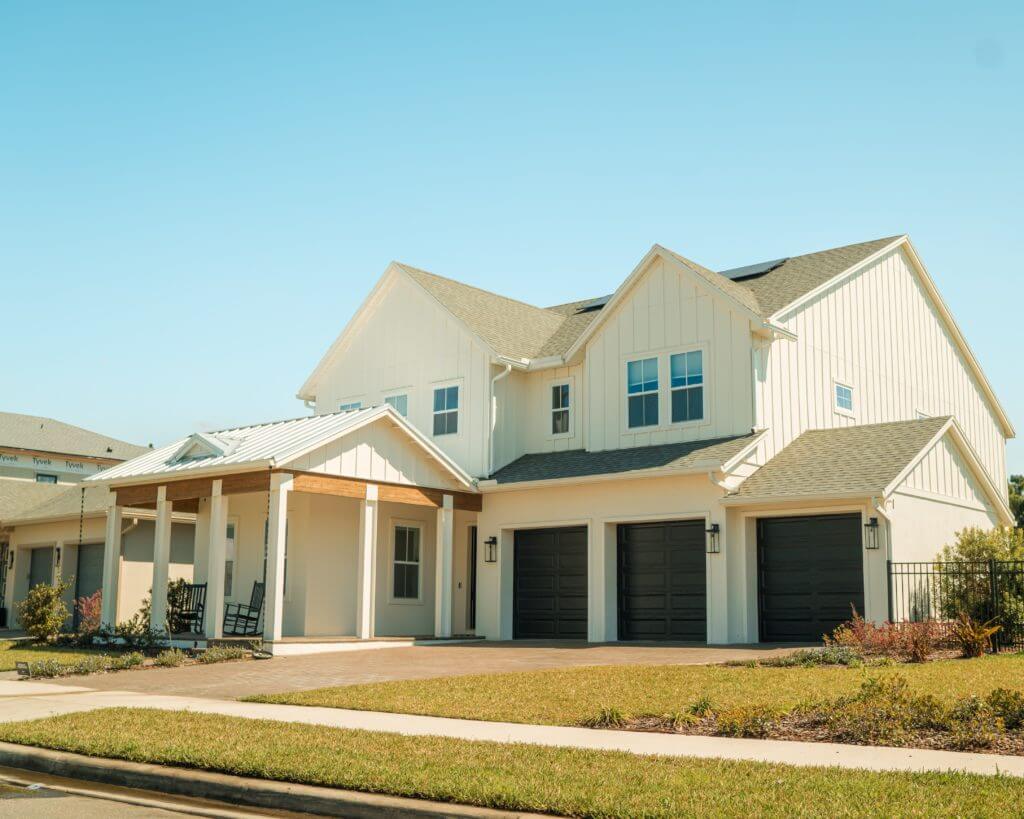
Standing Seam Steel Siding
As you would expect from the name, standing seam siding has a raised seam where the panels connect together. There are a variety of fasteners to choose from, including hidden fasteners that give the siding a more cohesive look. Standing seam siding is typically made off-site and offered in a variety of standard lengths and widths. With proper installation, this is an extremely durable product. However, be aware that any siding with seams potentially leaves a spot for the elements to get through.
Seamless Steel Siding
Seamless steel siding stretches the entire span of the house in one long piece. This is a special product made from steel panels coated with a protective layer of vinyl. Seamless steel siding can be custom cut to your home’s dimensions on-site or off-site for an exact fit. The lack of seams means water, pests, and dirt have no chance of making it inside.
Steel Siding Styles
Steel siding used to look similar to metal roofs back when it was first produced. Now, you can find this durable siding in multiple styles and appearances. Here are a few of the most popular options.
- Vinyl-Look: If you love the look of vinyl boards but can’t have it due to either HOA restrictions or region- and weather-specific concerns, you can find steel siding that looks like vinyl. It can be installed to look like overlapping boards or installed flat.
- Wood-Grain Style: Wood siding is attractive, but high-maintenance. It also does not stand up well to the elements. Steel siding can be made with a wood-grain appearance to give you the appearance you love with none of the downsides. Some companies even offer an imitation log siding for the look of a rustic log cabin with the durability of steel.
- Board and Batten: Board and batten siding has been around for decades. It is currently enjoying a resurgence among homes in the Modern Farmhouse style. Steel siding is offered in board and batten’s traditional wide, flat panels with eye-catching ribs.
- Corrugated: Corrugated siding looks like lots of small ridges or waves. This pattern can be made from steel as well as many other types of metals. Homeowners choose this look for the aesthetic appeal. However, it also has a hidden benefit: the corrugated pattern hides scratches and dings better than flat panels do.
Finding Installers
There are many manufacturers and installers if you are interested in steel siding. Different companies may specialize in a certain style or type of steel siding. So, for example, if you know you want steel siding that looks like logs, you should begin your search there.
If you want us to do the work and research for you, click the button below. Modernize will pair you with up to four steel siding contractors in your area so you get the best price and find a contractor you trust.
Compare top-rated siding pros in your area.
Read real homeowner reviews, explore qualifications, and view promotions. Modernize makes it easy to browse professionals and find one that will be perfect for your project.
